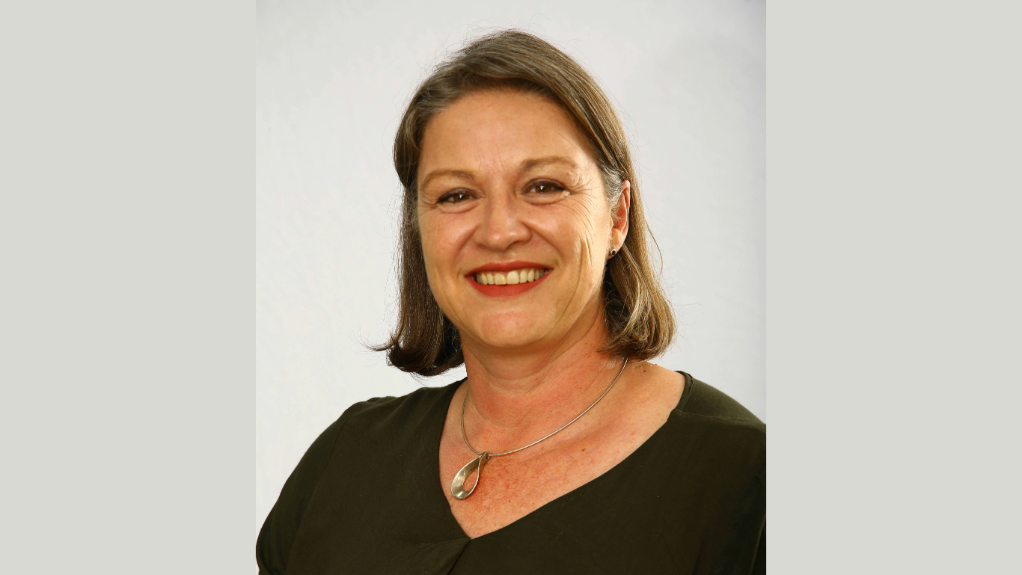GISTM brings more integrated approach to TSFs



FRANCISKA LAKE Since the launch of the GISTM, significant work and innovation have been dedicated to helping mines effectively comply
KAVANDREN MOODLEY It is important to establish trust and understanding between the mine and project-affected people
The Global Industry Standard on Tailings Management (GISTM) has brought a more integrated perspective to the approach, construction, operation and closure of tailings storage facilities (TSFs) since its launch four years ago, according to international mining consultancy SRK Consulting partner and principal environmental scientist Franciska Lake.
This means that an even wider range of disciplines now need to engage collaboratively in projects that relate to TSFs, from environmental, social and governance (ESG) specialists, to practitioners in mine closure, climate change, hydrology, geochemistry, water stewardship and disaster management.
In this regard, it is also important to establish trust and understanding between the mine and project-affected people, emphasises SRK principal environmental scientist Kavandren Moodley.
Although the building of cooperative relationships between mines and their stakeholders remains a continuous challenge, he says it has been a crucial ingredient in meeting GISTM standards.
However, Moodley also warns about potential misalignment between local regulatory requirements and the GISTM.
“In building the environmental knowledge base that the GISTM requires, additional information is often needed beyond what local regulations, or historical legislative conditions, may have demanded,” he explains.
In many cases, mines have focused solely on their project development areas, paying limited attention to the broader risks of a tailings breach. Closing these gaps, Moodley advises, requires collaboration between regulators, the mine and other stakeholders.
Since the launch of the GISTM, significant work and innovation have been dedicated to helping mines effectively comply with the GISTM, notes Lake.
She highlights that one of the key lessons learned from this process is the critical importance of ongoing engagement and relationship building with project-affected people throughout the lifecycle of a TSF.
This approach, notes Lake, fosters an environment where meaningful dialogue can take place around decisions that impact project- affected people, including the risks and potential consequences of a TSF failure.
She adds that SRK has observed that mines can significantly enhance their engagement and communication efforts when they have a well-established and effective stakeholder engagement plan in place.
In contrast, strained communication with project-affected people makes it more difficult to deliver critical messages, often delaying the implementation of GISTM requirements, cautions Lake, noting that this, in turn, heightens the risk for people in the inundation zone, who are often the most vulnerable.
Emergency Capability
A further critical area of the GISTM relates to emergency preparedness and response, which requires mines to plan in detail for disaster scenarios arising from TSF issues and failure.
SRK disaster and risk management principal technologist Andries Fourie explains that this process involves engaging other stakeholders in the required Emergency Preparedness and Response Plan (EPRP), which is also a GISTM requirement.
“One of the challenges that mines in countries like South Africa face is that capacity in the field of emergency response can be limited,” he notes.
Fourie adds that the GISTM wants mines to consult with government and to obtain a commitment to be part of this planned response, meaning that mines must gauge the stakeholders’ capacity to contribute. However, given the lack of resources in certain areas, local mines have had to look elsewhere for partners in securing the necessary support in the case of an emergency.
“Instead, industry agencies like Mine Rescue Services South Africa have been able to provide that response capacity,” he says.
Long-Term View
Mines are learning to take a longer-term view of TSF compliance, from design and construction through to closure, and this is enabling a more cost-effective and multi-disciplinary workflow over time, reports SRK Consulting associate partner and principal engineering geologist James Dutchman.
In the past, mines have worked with consultants and contractors with a short-term view, whereas Dutchman notes that this probably needs to be considered as a medium-term to long-term view that encompasses the full range of disciplines required to meet the new global standard.
A key cross-cutting element in various aspects of the GISTM is the management of surface and groundwater, including the geotechnical work that must consider how water content affects stability.
According to SRK partner and principal environmental geologist Lindsay Shand, there is also a water stewardship angle to be considered, which focuses on water quality and access in a broader river catchment.
“While these elements of the GISTM are yet to be fully explored in projects in our region, mines are cognisant that a holistic approach to water management is required,” Shand says, adding that mine operations are looking at strategic approaches to managing their impacts on the hydrological cycle, aligned with the water stewardship approach.
She also points out that TSFs are often located in low-lying areas, which are susceptible to the impact of variable rainfall patterns associated with climate change. With the lifespan of TSFs expected to withstand weather conditions over hundreds of years, planners will need to consider water stewardship to mitigate the implications of changing surface water run-off and water quality impacts.
“There is much about the GISTM that wasn’t new to the mining sector, but which required constant integration, innovation and improvement. The expertise in the sector to do this was often stretched, but there has been clear progress made across many disciplines,” concludes Lake.
Article Enquiry
Email Article
Save Article
Feedback
To advertise email advertising@creamermedia.co.za or click here
Comments
Press Office
Announcements
What's On
Subscribe to improve your user experience...
Option 1 (equivalent of R125 a month):
Receive a weekly copy of Creamer Media's Engineering News & Mining Weekly magazine
(print copy for those in South Africa and e-magazine for those outside of South Africa)
Receive daily email newsletters
Access to full search results
Access archive of magazine back copies
Access to Projects in Progress
Access to ONE Research Report of your choice in PDF format
Option 2 (equivalent of R375 a month):
All benefits from Option 1
PLUS
Access to Creamer Media's Research Channel Africa for ALL Research Reports, in PDF format, on various industrial and mining sectors
including Electricity; Water; Energy Transition; Hydrogen; Roads, Rail and Ports; Coal; Gold; Platinum; Battery Metals; etc.
Already a subscriber?
Forgotten your password?
Receive weekly copy of Creamer Media's Engineering News & Mining Weekly magazine (print copy for those in South Africa and e-magazine for those outside of South Africa)
➕
Recieve daily email newsletters
➕
Access to full search results
➕
Access archive of magazine back copies
➕
Access to Projects in Progress
➕
Access to ONE Research Report of your choice in PDF format
RESEARCH CHANNEL AFRICA
R4500 (equivalent of R375 a month)
SUBSCRIBEAll benefits from Option 1
➕
Access to Creamer Media's Research Channel Africa for ALL Research Reports on various industrial and mining sectors, in PDF format, including on:
Electricity
➕
Water
➕
Energy Transition
➕
Hydrogen
➕
Roads, Rail and Ports
➕
Coal
➕
Gold
➕
Platinum
➕
Battery Metals
➕
etc.
Receive all benefits from Option 1 or Option 2 delivered to numerous people at your company
➕
Multiple User names and Passwords for simultaneous log-ins
➕
Intranet integration access to all in your organisation


















